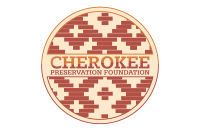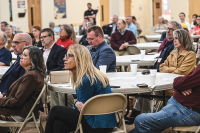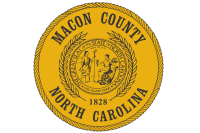Tribes share cultures at Cherokee festival
Dancing has been a part of Native American culture for centuries, as celebration or grief or worship or even warning. But a central venue for those dances has only been a few years in the making.
The Festival of Native Peoples is unlike anything else in the Native American dance world. It brings dancers from tribes around North America to Cherokee, where they spend three days dancing, spectating and interacting with other dancers and the public.
There are, of course, Indian dances called powwows held year round all over the country. They’re fiercely competitive and titles from the events are coveted honors.
But, said Robert Jumper, manager of travel and tourism for the Eastern Band of Cherokee Indians, they wanted this to be different.
“We actually looked at powwows as kind of a model, but powwow dancing is more of a competitive dance, and it is strictly dancing for the purpose of competition,” said Jumper. “We knew because of Cherokee culture that dance was much more than that to Indian cultures. We wanted to be able to present that in a format that people could come and see not only the Cherokee culture, but the diversity of Native American culture through that venue.”
And it is an experience different than any powwow in the country, according to Daniel Tramper.
Related Items
He should know — Tramper is a fancy dancer, chicken dancer, and three-time world hoop dance champion. He’s been frequenting powwows around the world for years as a Cherokee warrior dancer and he also helped start the Festival of Native Peoples.
“It’s really just a different atmosphere at the Festival of Native Peoples,” said Tramper. “We’re not there to compete, and at any type of competition, you kind of get that intensity. But here at the Festival of Native Peoples, you don’t. Everybody’s there to experience a good time, to enjoy, to learn about new cultures and learn about new friends.”
Actually, he said, he’s made good friends from other tribes that he’s still in touch with through the festival.
He and his son have been able to visit tribes in upstate New York and join in their private dances thanks to connections they’ve made at the festival.
Besides the sense of camaraderie that the festival promotes, both Jumper and Tramper say that one of its biggest draws is the little-known cultural niceties that don’t always come out in competitive dancing or the one-off dances that show up at special events.
“Many of the dances are reenactments of what they do as far as their cultural identity as tribes at home,” explained Jumper. “Like the western tribes are hunters, nomads mostly, the woodland tribes like Cherokee, we were farmers so we didn’t have teepees or tents, so there’s a great difference in the way we lived. And when they act that out in their dances, there’s a variety of hunting scenes and living scenes. They tell stories in their dance.”
This year, the festival will feature tribes from Mexico, Alaska, Arizona and other places around the country. Organizers try to bring in different tribes each year to give audiences a diverse taste of the deep and varied tradition of Indian dance from year to year.
There is one group, however, that has returned to the festival time after time. Their popularity is such that two performances have been scheduled to satiate audience appetites for their daring feats.
They are the Totonac pole flyers, and as part of their traditional rituals, they climb — sans ropes or harnesses — to the top of a towering pole before swinging and spinning from its height’s on handmade rope swings.
It’s a heart-stopping and crowd-pleasing display, said Jumper, and one that’s done with completely traditional equipment.
The pole itself, in fact, took some research by Jumper and his colleagues to procure. It’s something akin to a telephone pole, but can’t have any of the chemical treatments doused on most telephone poles.
Eventually, Jumper said they found the perfect pole in Mississippi. But the Totonac aren’t they only group with unique, traditional accoutrements.
The groups bring their own musicians, and many of the instruments are handmade by the musicians themselves from natural materials.
“Sometimes the instrument is so unique that no one else could make them even if they wanted to,” said Jumper.
It’s things like that which make the Festival of Native Peoples a singular and rich experience for spectators, who may not have other opportunities to interact with native cultures.
“It’s a one-of-a-kind opportunity,” said Jumper. “You would have to go, really, all over the country to see this, and you get to experience it in one place in a couple of days. It would take you months if you try to go to their homelands and see this happen.”
Festival of Native Peoples
The festival will run from 11 a.m. to 9 p.m. on Aug. 26 and 11 a.m. to 8 p.m. on Aug. 27. Tickets are $10 per day and children under 6 are free. There will also be food, Native American and otherwise, and crafts and jewelry that the tribes will be displaying and selling.









